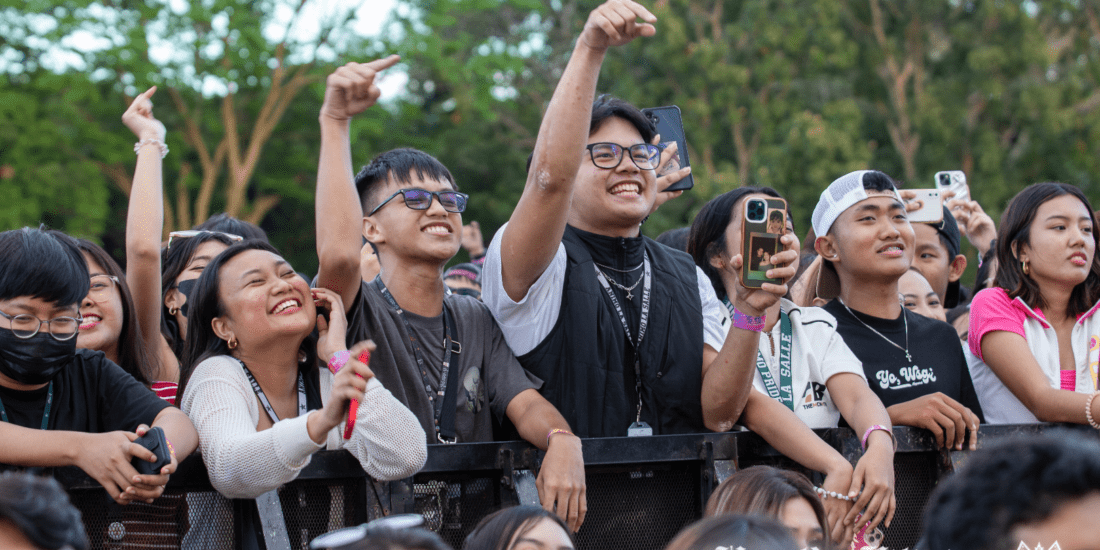#KutisPinas: Confronting colorism
“I was bullied for being morena,” she said on Twitter in Filipino. “Growing up, people told me morena isn’t pretty. Until now, I still receive comments about my skin color.” 20-year old Aira Sopang isn’t a famous personality, but you might want to let her words sink in.
A fourth-year Bachelor of Arts in Communication student from the College of Liberal Arts and Communication (CLAC), Aira tweeted this after several skin whitening brands launched offensive campaigns on social media perpetuating discrimination toward darker-skinned Filipinos.
In recent events, it’s no longer surprising that Aira, like many other Filipinas, would use social media to give light on this issue because it has become the sad reality for Filipinos.
It’s unfair, right?
On April 13, skin whitening brand Glutamax uploaded a series of online ad featuring two women of different skin color, implying contrast in favor of the one with the fairer complexion. The ad also cited a poll by mobile data gathering site Opeepl claiming that three out of five Filipinos believe that people with fairer skin receive better treatment compared to those who are less fair—along with the tagline #YourFairAdvantage.
Several days before that, another skin whitening brand SkinWhite posted a social media ad that also backfired. It showed twin sisters whose hair was braided together—one with blonde hair and light skin while the other with dark hair and tan skin. Unbeknownst to them, the brand committed blackface as they put makeup to the other sister to make her look like a person of color.
Netizens were quick to call out the ads as Glutamax’s “Your Fair Advantage” campaign propagated discrimination to morenas while SkinWhite’s “Black Or White Is Beautiful” campaign normalized blackface. The campaigns reflect how skin whitening brands and beauty products can oftentimes fail dark-skinned people—especially women.
No, GlutaMax. Here’s me raising my middle finger at you: I’m alright with my brown #KutisPinas and I’m still in the showbiz industry, you uneducated potato. pic.twitter.com/AgZ11PJOnX
— Chai Fonacier (@bansheerabidcat) April 13, 2019
Just a note from a Filipina with brown skin since birth:
There is no problem AT ALL sa mga gustong magpaputi. The problem is when whitening brands make us look “kaawa awa” dahil lang maitim kami. Kasi, hindi po kami kawawa, maganda ang kulay namin.
— Bianca Gonzalez (@iamsuperbianca) April 13, 2019
In the Philippines, morenas experiencing discrimination for their darker complexion isn’t new. Regardless of gender and status, this is where most experience colorism—a form of discrimination or bias based on a person’s skin color.
On colorism
We can’t deny the fact that colorism is a social problem that is both old and rampant. In the article The difference between racism and colorism, journalism professor Lori Tharps of Temple University said that colorism is a societal ill felt in many places all over the world—including Southeast Asia wherein colorism remains a stain in its social fabric in 2019.
In reality, many Filipinos still regard lighter skin tone as the convention for beauty and status. This makes sense to Aira as she said that in our society, people believe that “kapag maputi ka, maganda ka. Kapag maitim ka, pangit ka,” but our fascination for lighter and fairer skin color isn’t entirely inherent, as it is rooted when our country was colonized by Spain and the United States for more than three centuries—as stated in the book “Filipinos and the Color Complex: Ideal Asian Beauty” from professor Joanne Rondilla who teaches Asian American Studies at San Jose State University in California.
Undeniably, the Western image of people who have lighter complexions have negatively influenced our perception of our own ancestors’ skin color. In Spanish and American ideals, lighter complexion signifies wealth and social status while darker complexion is considered unattractive as people correlate it to manual labor, according to University of the Philippines graduate student Sheila Magdaraog in her 2014 study on the portrayal of beauty in Philippine Mass Media.
No exception
Fortunately, in DLSU-D, a related study has surfaced to give light on the issue of colorism. Graduating Communication Arts students China Macaranas and Cyril Jamolin, for example, explored how Lasallians respond to online posts involving skin tone in their thesis titled Selected De La Salle University-Dasmariñas Students’ Evaluation Of Computer-Mediated Communication Messages About Different Skin Tones.
The study showed that Lasallians have the tendency to create constructive messages on social media posts that involve the issue of embracing one’s skin tone. For example, when Lasallians encounter these posts on their feed, they would react positively by commenting encouragement or by hitting the like or heart button.
Studies like that of Macaranas and Jamolin uplift morenas, at least according to Aira herself. “Kahit hindi ko personal na nakita yung mga sumagot sa data gathering nila (Macaranas and Jamolin), masaya ako na marinig na may mga Lasallians na kayang mag-empower ng mga morena.” Furthermore, as revealed in the study, Lasallians generally claim there’s no exception in beauty as light and dark skin tones are equally beautiful.
***
The insensitive ads posted by Glutamax and SkinWhite reflect how discrimination towards another person’s skin color is an undying social problem—but it doesn’t have to remain that way. People like Aira as well as many other Filipinas prove that being morena is never a disadvantage. Truth is, it’s a gift we should embrace.





